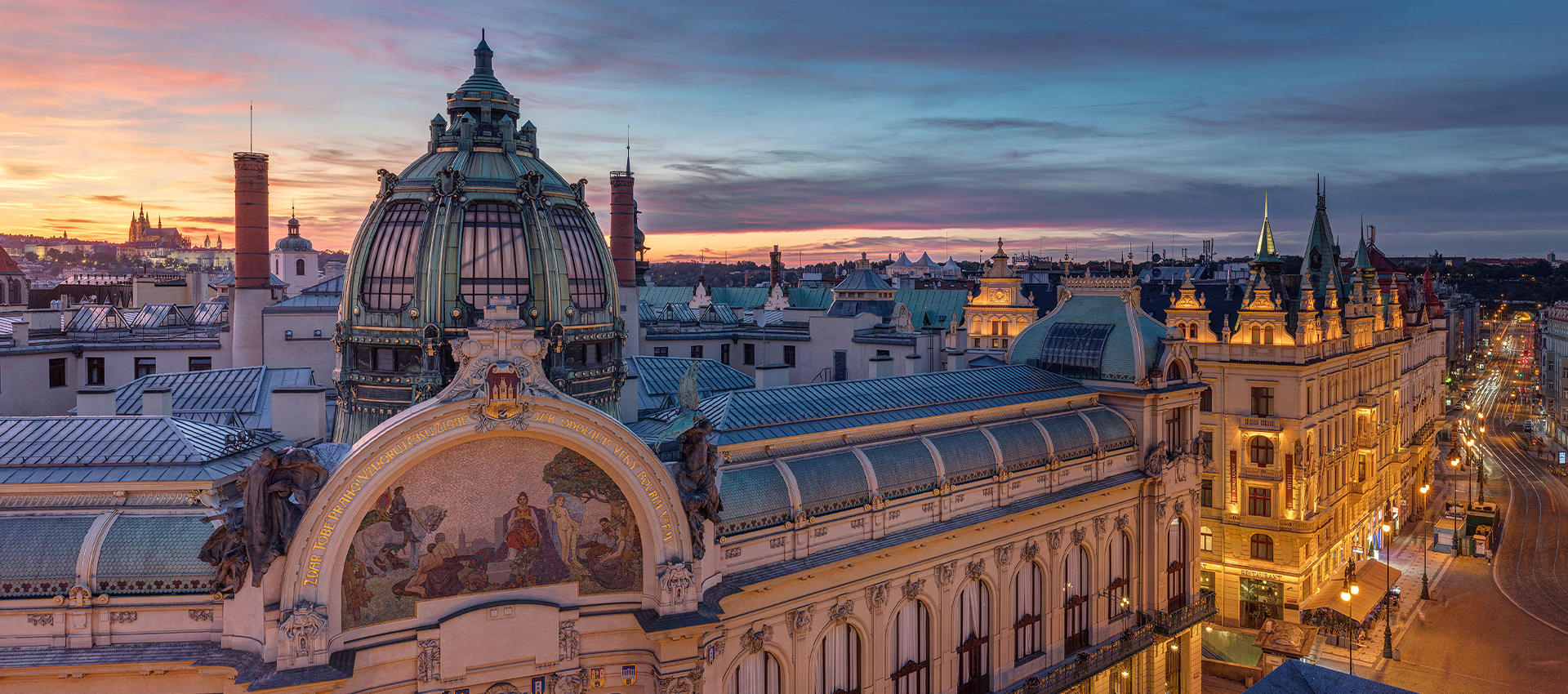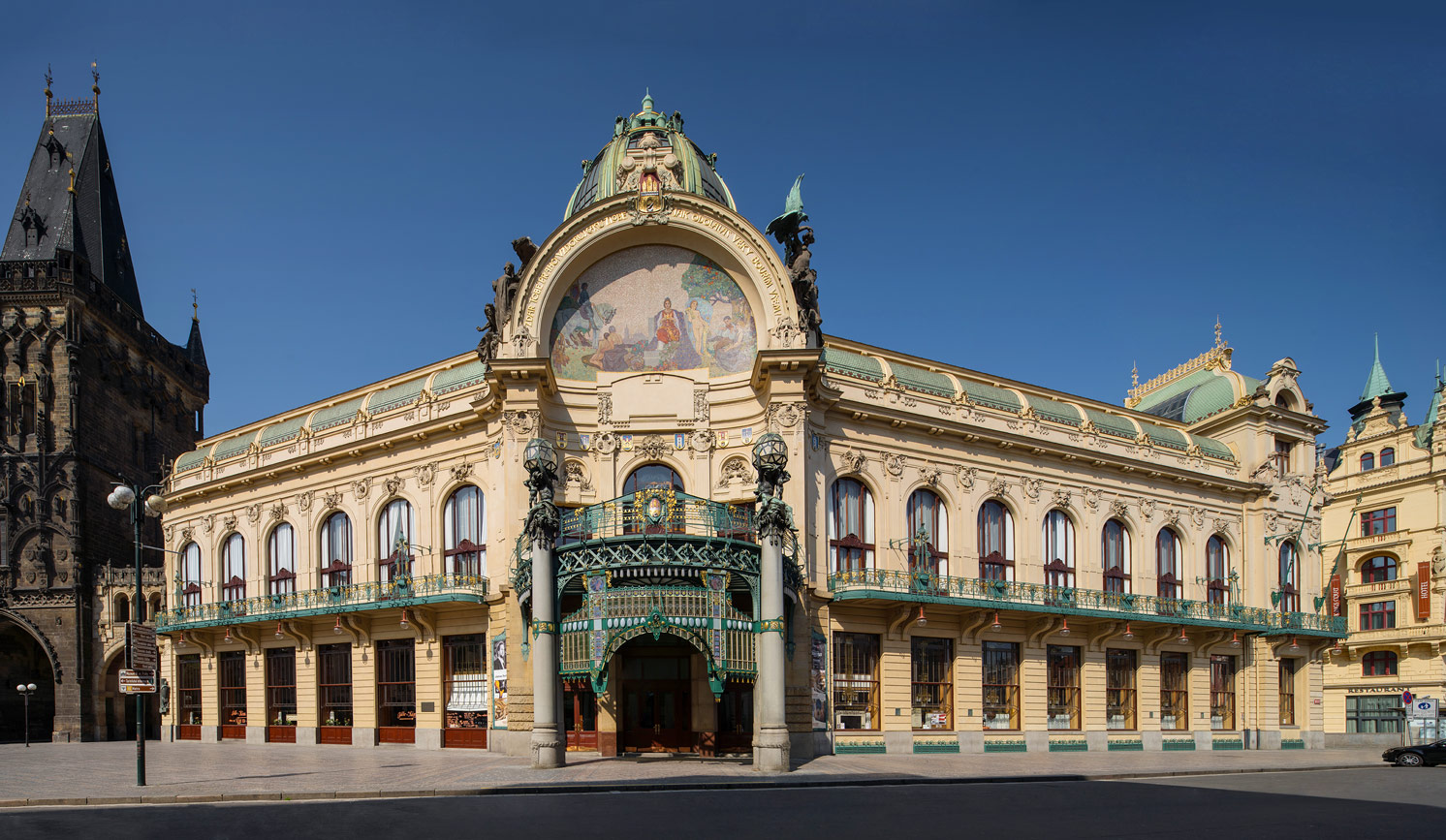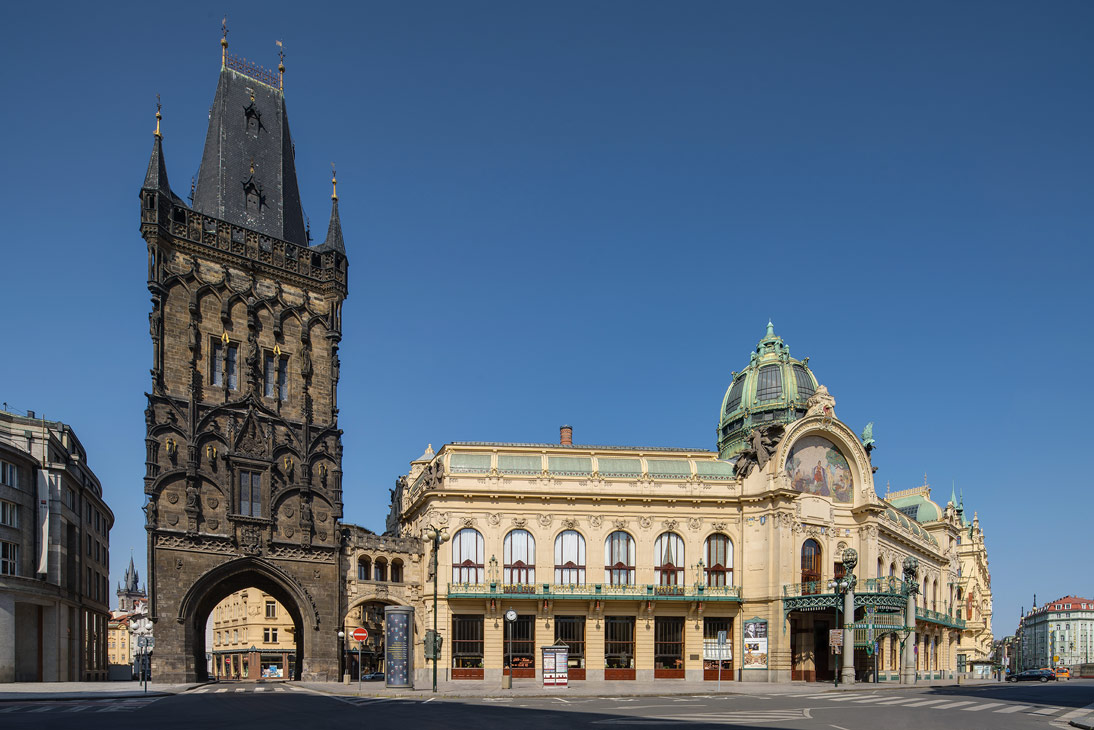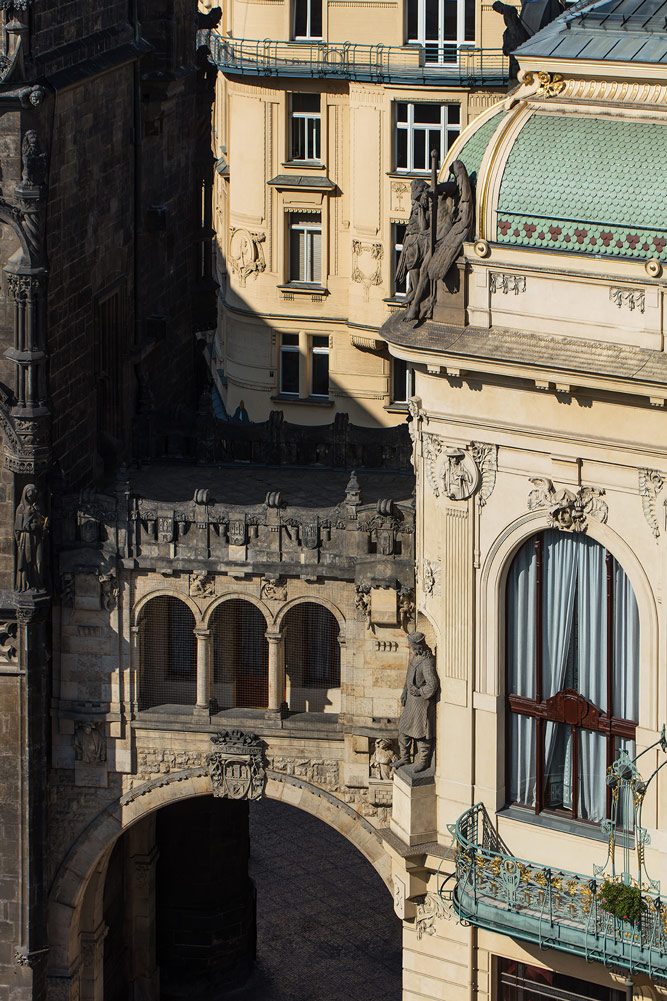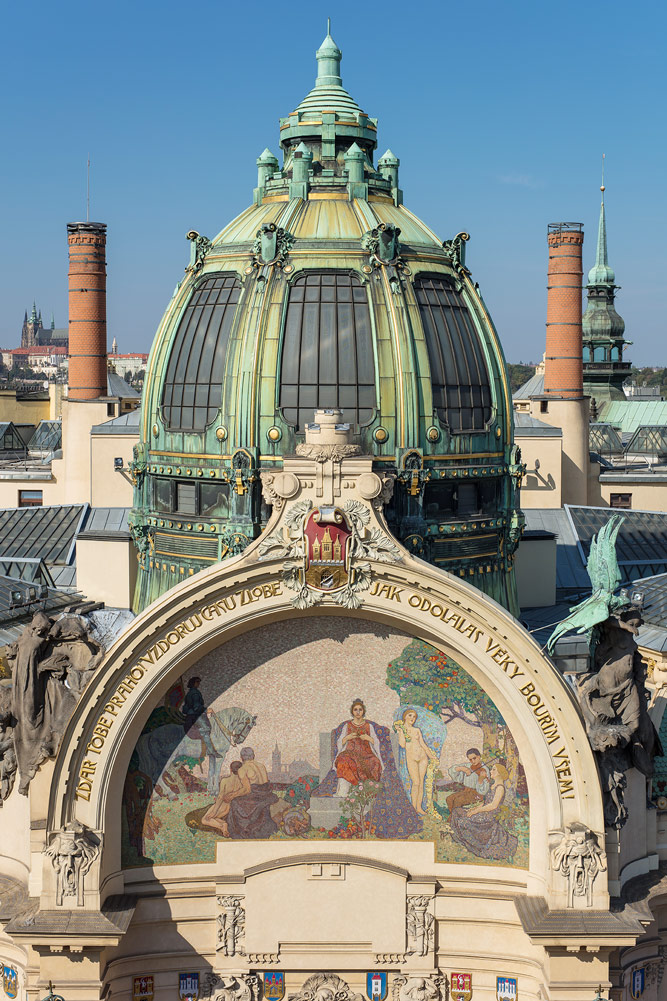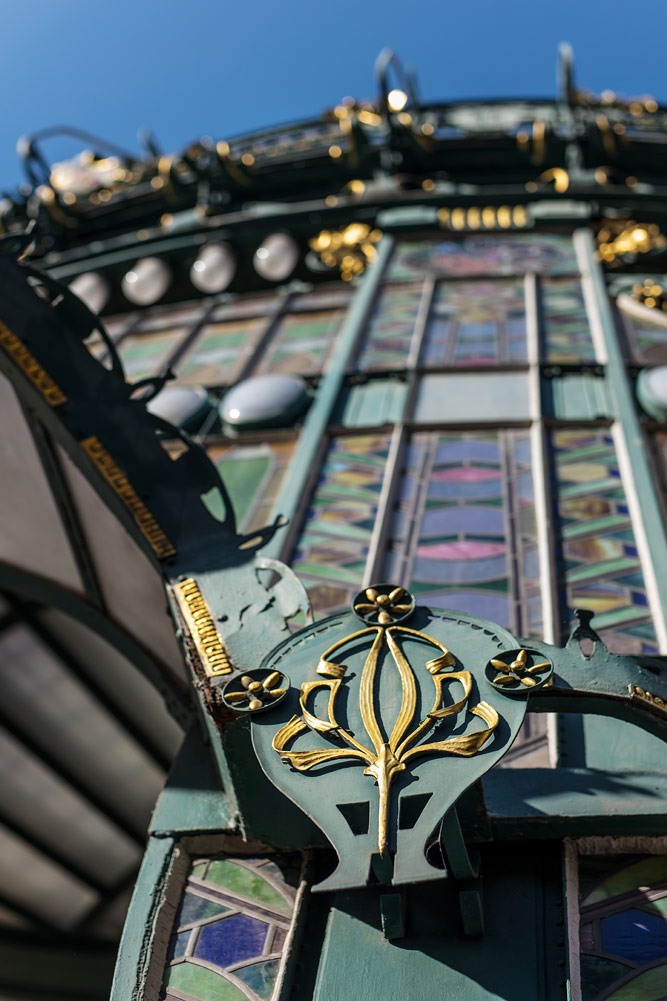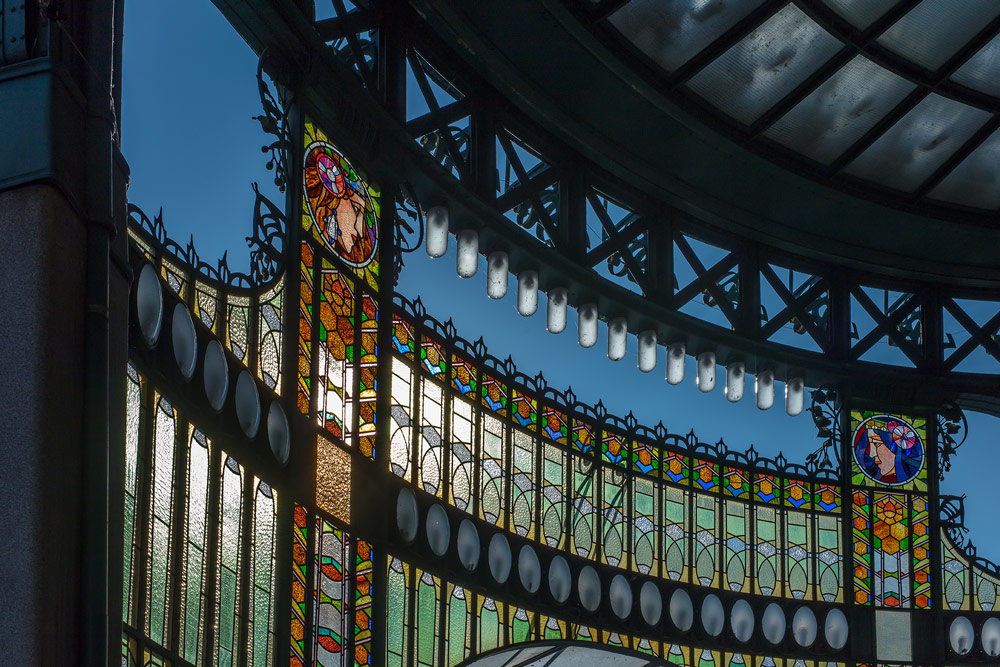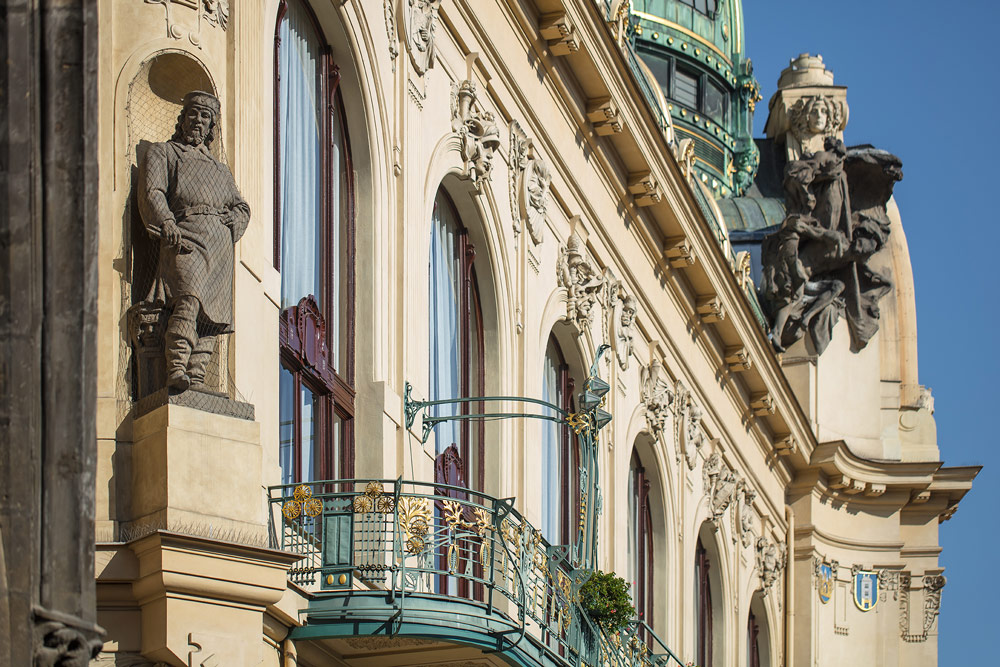The Municipal House facade is eyecatching not only due to its monumental architectural composition but also because of the unique profile created by its collection of the sculptural art of the time. Monumental allegorical figures, displayed all over the facade of the building, which were created by some of the greatest artists represent particular historical and classical cultural symbols (allegories of the nation, Prague, legendary characters and events, personification of art, philosophy, science, etc.), but they are also inspired by modern day symbols (allegories of industry, trade, transport).
Anthropomorphical sculptures are accompanied by decor with Art Nouveau floral ornaments as well as other classical architectural elements. Above the tops of attic gables and on the tips of the spires there are sculpted vases, cartouches, tombs, stylized battlements and other decorative elements.
The front facade in line with the cupola axis is dominated by the main entrance portal with a representative semicircular balcony which is accessible from the Mayor’s Hall on the 1st floor.
The large exedra under the main cupola is decorated with a semicircular scene on the glass colorful mosaic Apotheosis of Prague according to a painting by Karel Spillar. The picture is adorned with a golden sign with a quotation by Svatopluk Cech which is still relevant today:
“Hail to you Prague ! Brave the time and malice as you have resisted all the storms throughout the ages.”
The Municipal House is special for the mutual harmony of all the decorative elements with architectural features which provide with their shape and form a suitable background for the wonderful sculptural display. Richly ornate, colorverdigried stucco ornaments and artificial stone cover all the facades and continue similarly on the roof in copper, zinc and zinc alloy. All these metalwork elements are, with the exception of the roof area, provided with gilding and ochre paint which is intended to imitate stucco. Some sculptured figures are partly made of stone (sandstone), partly of artificial stone, while others are bronze and copper. The whole monumental look is completed by the painted and gilded, highly decorative metalwork elements of the balcony handrail, portal sun roofs, etc.
Karel Novak is associated with other facade stucco work, these being colored and gilded city emblems, plastic floral ornamentation, vases and tombs, etc. on the front facade. Evidence of the same hand can be seen in the sitting figures of ephebs made of artificial stone and located above the sidefacade window ledges, etc. (not confirmed for all of the sculptures and elements). Other stucco elements on the side facades were created by Antonín Mara (south facade), Eduard Piccart, Bedrich Simonovsky and Frantisek Kraumann (north facade).
A conspicuous feature which forms a continuous circle alongside the facade at the level of the 1st floor window ledges are plaques with deep threequarter reliefs of semifigures in folk costumes. This artificialstone decoration showing the folklore of individual regions of Bohemia was created by a group of artists, which included J. Pekarek, A. Zoula, E. Piccardt, F. Kraumann, B. Simonovský, A. Strunc.
The sculptures on the Municipal House facade were created by a number of renowned artists of the day. Two central stone sculptural groups called Humiliation and Revival of the Nation (featuring a copper eagle), placed alongside the central cupola’s exedra were created by Ladislav Saloun. Karel Novak created a pair of huge copper atlas figures — torchbearers carrying the ”Laterna Magica” on the portal pylons. Novak is also the creator of the unique and artistically remarkable ”Mascarons” placed in the voussoirs of the fifteen semicircled windows on the 1st floor of the front facade.
These are large stuccoed allegorical heads provided in addition to floral ornaments together with a variety of tributes to the fields of Painting, Poetry, Science, Philosophy, Trade, Agriculture, Industry, and also Motoring and Aeronautics. The latter two are represented by two heads with hoods and protective glasses located above two side windows.
The same corner just one floor below bears a memorial plaque from 1918 with a pair of allegorical figures by Ladislav Saloun. The Westernside facade features a round turret with a spire on the corner which is enhanced by two fairytale figures ”Rusalka” and ”Dudak” of artificial stone by Frantisek Uprka.
Another wonderful part of the facade is the stone decoration of the NeoGothic corridor connecting the Municipal House with the Powder Tower by Antonin Strunc and Josef Pekarek.
What most reminds one of an exhibition gallery is the line of huge figures erected along the building above the cornice. On the left corner of the front facade there is a symbolic sandstone sculpture of the Spirit of History with a sword by Frantisek Rous, on the right corner beside a spire there are figures made of artificial stone representing allegories of Literature, Building trade, Sculpture and Painting by Antonín Strunc.
The north facade is enlivened by an artistically interesting stone allegorical figure of a semireclining naked male ”Drama” and a naked female ”Music” by Josef Maratka. The south facade is decorated above the attic window gable with a pair of stone figures depicting Sower and (female) Harvester by Antonín Mara. The exhibition of sculptures continues also on the lower levels of the building : At the level of the 1st floor on the front facade’s left corner there is a portrait stone figure representing the Powder Tower’s builder Matej Rejsek by Cenek Vosmik.

